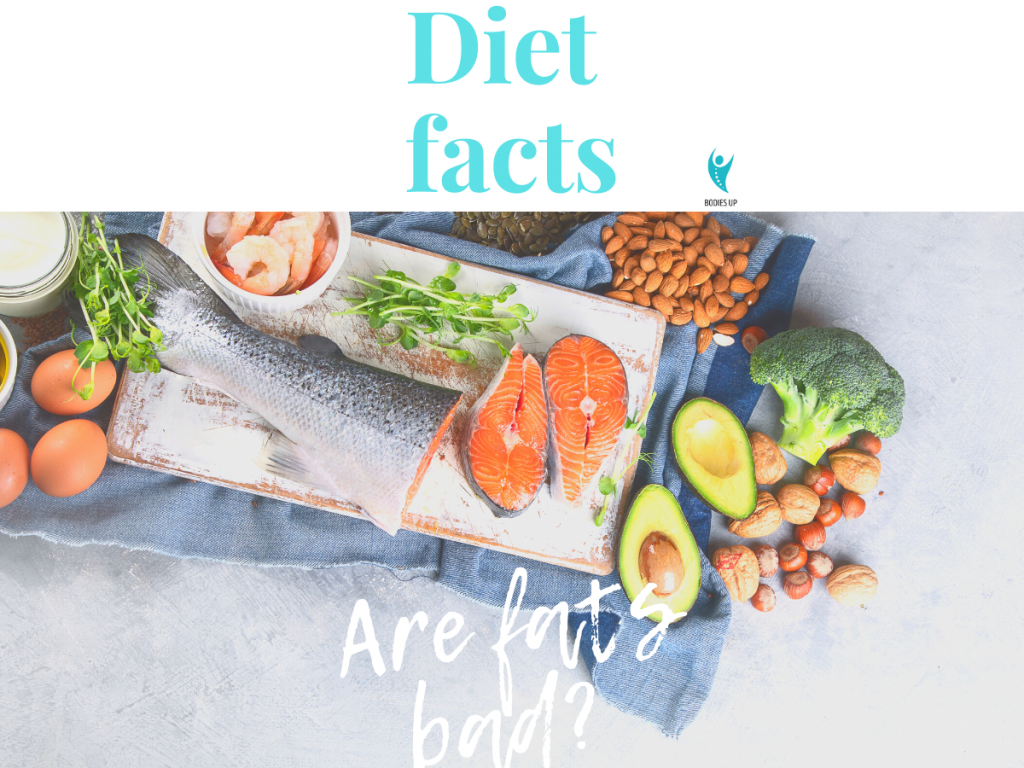Nowadays, it’s all about the body. The most desirable is a skinny body with visible muscles. This makes us crazy about diet and workouts. We are training longer and eating less. Mainly we are afraid of fats. We try to exclude them entirely from the diet, thinking that it will help with weight loss. Nutritionists from all over the world agree that an adult person should eat 25%-40% calories during the day coming from fats. Where you can find good fats, and why you should avoid bad ones? We will explain everything.
Good fat, what does it’s actually mean?
The phrase “healthy fat” refers to:
– monounsaturated fats (which are anti-inflammatory, reduce the risk of cardiovascular disease)
– polyunsaturated fats (omega-3 and omega-6 fatty acids essential fats our bodies need for brain function and cell growth).
The reason why it’s healthy is that, among other heart-health benefits, they help reduce LDL cholesterol (this one that clogs your arteries). Many research also shows that it can benefit insulin and blood sugar levels in the blood, decreasing at the same time the risk of type 2 diabetes.
Where I’ll find it?
● Avocado
One of the most incredible fruits, whereas most fruits primarily contain carbs, avocados are loaded with fats. One medium avocado has approximately 23 grams of fat, monounsaturated principally fat (called oleic acid). Avocados are:
- The best sources of potassium in the diet.
- Even containing 40% more potassium than bananas.
- A typical high potassium food.
It’s also a great source of fibre. Try to take the best of what avocado can give to you and replace the mayo on your sandwich, the butter on your toast or make delicious guacamole.
● Nuts
Nuts like pecans, pistachios, cashews, and almonds also pack a lot of healthy fats and are incredibly beneficial. Almonds are the richest in vitamin E, and pistachios have lutein and zeaxanthin, carotenoids important for eye health. They are high in healthy fats and fibre and are an excellent plant-based source of protein.
● Fatty fishes
Oily fish like salmon, sardines, mackerel, herring, and trout are full of omega-3 fatty acids and are known to help boost heart health. It’s one of the best ways to get the essential fat. The American Heart Association recommends eating at least two servings weekly to get the best benefits. Studies show that people who eat fish tend to be much healthier, with a lower risk of heart disease, depression, dementia, and other common diseases.
● Dark chocolate
Yes, that’s right, I hear the reaction of all the chocolate lovers. Dark chocolate is one of those rare health foods that actually taste incredible. One ounce of dark chocolate counts as one serving and contains about 9 grams of fat. It also contains healthy fats and numerous other healthy nutrients—vitamins A, B, and E, calcium, iron, potassium, magnesium, and flavonoids (plant-based antioxidants). Just make sure to choose quality dark chocolate with at least 70% cocoa.
● Eggs
Eggs are an inexpensive and easy source of protein. One whole egg contains 5 grams of fat, but only 1.5 grams are saturated. Whole eggs are also a good source of choline, an essential B vitamin that helps the nervous system.
Whole eggs are actually loaded with vitamins and minerals. They contain a little bit of almost every single nutrient we need. Make sure that you are choosing free-range eggs.

Ok, so what do we mean by “bad fats”?
Scientists say there are two main types of potentially harmful dietary fats:
● Saturated fat
This type of fat comes mainly from animal food sources, such as red meat, poultry, and full-fat dairy products.
Eating more significant amounts of saturated fat is linked with an increased risk of heart disease and high blood cholesterol levels.
● Trans fat
The worst type is trans fat. It is a byproduct of a hydrogenation process that is used to turn healthy oils into solids and prevent them from becoming rancid. There is no safe level of consumption of trans fats. Therefore, they have been officially banned in the United States. Eating foods rich in trans fats increases the amount of harmful LDL cholesterol in the bloodstream. It creates inflammation linked to heart disease, stroke, diabetes, and many other diseases.
Try our tips to eat healthier.
● To avoid trans fat, check food labels and look for the amount of trans fat listed.
● Use oil. For example, saute with olive oil instead of butter.
● Eat fish or seafood 3 times per week instead of meat. If you have to choose lean meat and skinless poultry.
● Try to avoid snacks or read the list of ingredients. Many popular processed snack foods are high in fat.
Remember that most foods contain a mix of different kinds of fat and varying levels of each type. Don’t go to extremes. We need every type of fat in the diet. Only a healthy and varied diet will keep you healthy. Your body needs some fat — the healthy fats — to function normally. If you avoid all fat, you risk getting insufficient amounts of fat-soluble vitamins and essential fatty acids. Instead of doing away with fat in your diet, enjoy healthy fats as part of your balanced diet.


Thanks for your blog, nice to read. Do not stop.